#Emperor Constantine the Great
Explore tagged Tumblr posts
Text
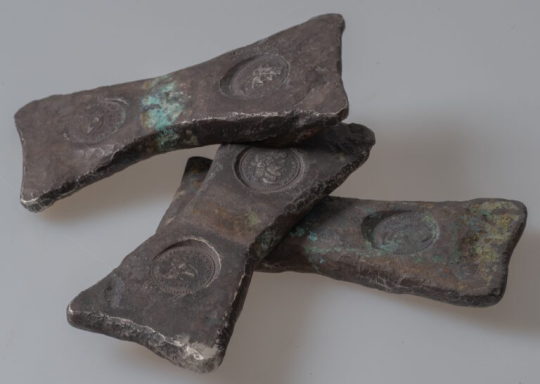
Very Rare Emperor Constantine Silver Ingots Saved From Illegal Sale
A man allegedly tried to illegally sell three rare Roman-era silver ingots that his great-grandmother reportedly found in her garden years ago.
Three "truly sensational" Roman-era silver ingots depicting Constantine the Great were nearly sold illegally on the internet, a new investigation finds.
An unnamed man alleged that his great-grandmother found the rare artifacts buried in the family's backyard in Transcarpathia (also known as Zakarpattia), a region in western Ukraine. Later, the man reportedly tried to sell one of the silver bars online, according to Public Uzhgorod, Ukraine's public broadcast station.
However, officials from the museum intervened by reporting the attempted illegal sale to local law enforcement. When officers searched the home, they discovered two additional ingots. Because the ingots have "special cultural value," Ukraine's Office of the Prosecutor General has taken over the case, according to a translated statement from the National Museum of the History of Ukraine in Kyiv.
Each of the metal blocks, which are almost entirely pure silver, weighs more than 12 ounces (342 grams) and contains a coin-shaped impression of Emperor Constantine the Great on each side, according to the statement. Constantine, who ruled from A.D. 306 to 337, is known for ushering Christianity into the Roman Empire and moving his capital to "New Rome," which later became Constantinople (modern-day Istanbul).
The ingots would have been used during the minting process to strike coins known as siliquae. The coins with Constantine's likeness would have been issued between A.D. 310 and 313 in Augusta Treverorum, a Roman city that today is Trier, Germany. At one time, the pieces would have been batched together with a thin, silver ribbon, which has since been lost, according to the statement.
"Three ingots fastened together were supposed to be a gift for a very high-ranking person," Maksym Levada, a curator at the museum, said in the statement. "The fact that they were found outside the Roman Empire on the territory of modern Ukraine makes them an invaluable source of our past."
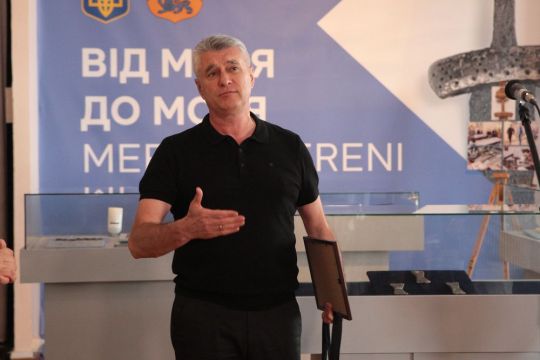

Experts estimate the treasure's value at 3.5 million Ukrainian hryvnia, or about $84,800.
"But what makes them unique is not the cost, but the fact that only a few similar ingots have been found in Europe to date," Andriy Kostin, Ukraine's prosecutor general, said in the statement.
There are about 90 known Roman silver ingots in existence today, with only 11 containing mint stamp impressions, making the three ingots' recovery even rarer, according to the statement.
Kyrylo Myzgin, an archaeologist and faculty member at the University of Warsaw who initially examined the ingots, said in an email that the finding "can be considered truly sensational."
"It is excellent news that they ended up in a museum rather than on the black market for antiquities," Myzgin said. "Roman silver ingots with coin die imprints are incredibl\y rare and were virtually unknown outside the Roman Empire. It is likely that these ingots reached the territory of what is now western Ukraine as a result of interactions between the local population — possibly Germanic tribes or Dacians [people in what is now largely modern-day Romania] — and the Roman Empire in the early 4th century. However, the exact nature of these interactions has yet to be determined."
The ingots are now on display in the museum's "Salvated Treasures" exhibition, which contains a collection of rescued artifacts.
By Jennifer Nalewicki.
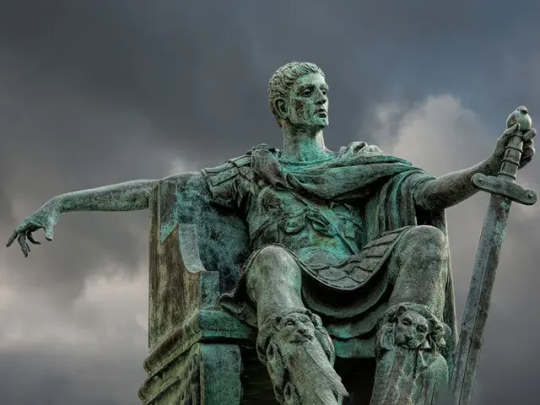
#Very Rare Emperor Constantine Silver Ingots Saved From Illegal Sale#ukraine#transcarpathia#zakarpattia#Emperor Constantine the Great#silver#roman-era silver ingots#ancient artifacts#stolen#looted#archeology#archeolgst#history#history news#ancient history#ancient culture#ancient civilizations#roman history#roman empire#roman emperor#roman art#ancient art#art history
37 notes
·
View notes
Text
Tyrant’s Lullaby
Once upon a time, there was a glorious, terrible man. He built horrors. He built wonders. He brought monsters up from the deep. He took a child from the arms of a horrified, weeping family, and raised him not as a boy but as a general. He took a child and ruined his future, He took a child and made him a king, a pet, a dog. He marched armies over the face of the ravaged earth, and trampled all that did not kneel before the weight of the storm. He burned tundras to ash and shook the mountains until they crumbled, He boiled the seas to mist and the skies to charcoal. And when the scouring was done, and the earth was entombed in ashes, He turned His dreaming, endless glare upon His own.
He strangled the thunder that had bore Him a throne, He sent the golden, the children stolen from their cradles, to plunge down long knives into turned backs raised so fervently before His regard. With their blood they had built Him a kingdom, and with their bones He crowned Himself a throne. And when Terra knelt, cowed, battered, in awe and in fear, He turned His gaze skywards.
And the stars felt His benevolent wrath.
He bore twenty sons, two of them sacrificed, and He unleashed them upon the earth, the skies, the stars. They hunted for Him, they loved Him, they adored Him, yet some had strayed too far from His light, some had gazed upon the man that would be a god with sullen, hungry eyes, doing His bidding, and knowing His wrath. They are those who were there when affection curdled to treachery.
There was no peace among the stars, no mercy, no rest, simply a slow, heartless drowning as the gold claimed them limb by limb, inch by inch, and swallowed them into the endless light.
And then war. Treachery, when the stars themselves were swallowed. When brother turned against brother, and father against son. When the Phoenix cleaved the Gorgon’s head from his shoulders, and the Immortal bashed in the Haunter with a hammer, when the Angel fell to the Traitor and He stained the Palace’s stones red with His son’s blood. When Horus burned, when the Angel shed his wings and the golden were shattered upon the anvil of betrayal, the Father fell to His son.
He was buried upon a rotting throne, screaming hollowly into the fading dark, the stars basking in His rage, His pity and His wrath. He was buried alive in a tomb made from gold, ashen bones ruling a decaying kingdom from the grave, dreaming forever of brighter days. Dreaming of His sons, and how He betrayed them first, how they betrayed Him, how they abandoned His bones. And finally could the golden rest, bathed in the heart of their greatest shame, enshrining the decaying dust of a master they had failed, in an empire He had forsaken.
That man was the Emperor. That corpse is the Emperor, golden, glorious, and decaying just like the slaves.
Do not think your bones different from a slave's. When you rot, your corpse will be indistinguishable from those of your servants.
#the primarchs#primarchs#traitor primarchs#horus lupercal#fulgrim#ferrus manus#sanguinius#warhammer 40k#sculptor of crimson#wh40k#constantin valdor#warhammer#wh40k writing prompts#adeptus custodes#emperor of mankind#drabble#primarch#horus heresy#fanfic#I wrote this a long time ago#here it is#writing#thunder warriors#great crusade#unification wars#vulkan#konrad curze
168 notes
·
View notes
Text

The Triumph of Rome: The Youthful Emperor Constantine Honoring Rome by Peter Paul Rubens, unused design for a series of tapestries about Constantine commissioned by King Louis XIII of France
Flemish, c. 1622-1623
oil on panel
Mauritshuis, The Hague
#triumph#Ancient Rome#Emperor Constantine#Constantine I#Constantine the Great#history painting#art#painting#Flemish#baroque#Peter Paul Rubens#Rubens#Mauritshuis
105 notes
·
View notes
Text

Constantine the Great (272-337) and his mother Helena of Constantinople (246/248-330).
#saints#christianism#catholicism#constantine the great#roman emperor#roman empire#helena of constantinople#st helena#roman empress#mater senatus#mater castrorum#mater patriae#augusta#constantinian dynasty
9 notes
·
View notes
Text

Statue of Emperor Constantine overlooking the Great Bath of the Roman Baths in Bath Spa, UK, November 2024.
#photography#bath spa#roman baths#roman history#ancient history#ancient rome#constantine the great#roman emperor
5 notes
·
View notes
Text
constantine is an alien and he is kinda spacey!!!! he came in from moesia to christianize all of rome!!!!!
0 notes
Text
SAINT OF THE DAY (August 18)

Flavia Julia Helena, also known as Helena of Constantinople and in Christianity as Saint Helena, was an Augusta of the Roman Empire and mother of Emperor Constantine the Great.
Not much is known about Saint Helena but it is probable that she was born in the middle of the third century in Asia Minor.
She worked as a stable maid as a young woman, according to Saint Anselm.
Helena later married a young Roman official, Constantius Chlorus, who took her as wife despite their difference in social status.
Around the year 270, she gave birth to their first son, Constantine.
Constantius quickly rose in the ranks of the Roman military. Due to political reasons, he was forced to repudiate Helena and marry another.
Helena remained at a distance as she watched her son rise in the court of Diocletian.
In 305, Constatius, now Augustus, and Constantine went to Britain to fight against the Picts.
Constantine became emperor when his father died unexpectedly at York.
As the new emperor, his first action was to recall his mother Helena.
Shortly after her son’s accession, Helena converted to Christianity.
Her faith moved her to care for the poor by providing for their needs through generous almsgiving.
She also worked to liberate prisoners and those sent to the mines or into exile.
Constantine’s reign took a downward turn when he ordered the death of his son and that of his second wife.
The family tragedy pushed Helena to go on a pilgrimage to the Holy Land in 326.
There, she ordered the construction of the Basilicas of the Nativity in Bethlehem and of the Ascension on the Mount of Olives.
The work was overseen by Helena whose faith was rewarded when the True Cross was discovered.
Possibly through Bishop Macarius of Jerusalem, she had a woman who was near death brought from the city.
When the woman touched the first and second crosses, her condition did not change.
However, when she touched the third and final cross, she suddenly recovered.
Helena then declared the cross with which the woman had been touched to be the True Cross.
The three nails from the Crucifixion were given by Helena to Constantine.
On the site of discovery, Constantine ordered the building of the Church of the Holy Sepulchre.
Churches were also built on other sites detected by Helena.
Helena died in an unknown location in 329. Constantine had her body brought back to Rome.
0 notes
Text
The Conversion of Constantine The Great
By Chicago Times Magazine – July 25, 2024 The conversion of Constantine the Great, a pivotal moment for both Christianity and the Roman Empire, remains a blend of historical fact, legend, and theological interpretation. Often hailed as the first Christian emperor, Constantine’s embrace of Christianity was a complex interplay of political acumen, personal belief, and the evolving religious…
1 note
·
View note
Text
0 notes
Text
Spice & Secrets

Masterlist
Pairing: Constantine Corrino x (f)reader
Tags: NSFW, Childhood Friends to Lovers, Mutual Pining, Slow Burn Romance, Betrayal of Duty vs. Love, Angst, Yearning, Power Dynamics, Politics, reader is a bene gesserit, first time,
This chapter takes place roughly throughout the first episode.

Prologue
You knew each other as children growing up in House Corrino. Back then, conversations of the Butlerian Jihad and the spice trade passed through your ears without a second thought. The three of you were playmates: Constantine, the emperor’s bastard son, his younger sister Ynez, the princess and heir to the throne, and you, the daughter of the household's headservants.
You and Constantine always sought each other. Your parents were well-respected by the Corrinos and established themeselves as head servants of the great House, allowing you to accompany the royal children in their studies.
Each time you heard a funny joke in school, you'd glance at him, eager to see his knowing smirk. Every time the two of you were caught being noisy, his golden eyes would find yours, laughing at your shared trouble.
In your younger years, you loved picking flowers for your mother, always dragging Constantine along to the gardens with you. It’s how you earned the nickname "Flower" from him.
In a way, he had always been your defender. One of the noble boys in the court, a brute named Colin would always victimize you. Whenever the kids played, you'd always say something strange and be the first to get picked on.
One day, Constantine had overheard one such jab coming from Colin and his friends. He stood in front of you, shielding you from them and staring them down, he said. "Leave her alone."
Collin was taken aback, forcing a laugh to make it look like all good fun. Since that day, the teases relented.
Your future seemed secure, bound to the service of House Corrino.
Until one day, an elderly Bene Gesserit named Ella recognized a curiosity in you. A skill that could be honed, refined, and weaponized.
One afternoon, while you were playing in the gardens, your mother pulled you aside. She spoke calmly, telling you not to be afraid. You followed her quietly as she led you through the palace halls. The next thing you knew, you found yourself alone in a dark room, staring at a woman whose face was hidden by robes. Confused, you turned, seeking your mother-
"Face me."
The command rang out through you, and without thinking, you obeyed, turning to face the old woman. Your heart raced in your chest.
"Kneel."
A cold command that your body obeyed without hesitation. Kneeling, you stared at the woman, fear coiling in your stomach.
With the calm tone of authority, she spoke. "Put your hand in the box."
She revealed a small, dark box, and as the room seemed to shrink around you, your mind screamed to pull away, but your body remained frozen.

An hour of excruciating pain later, you were escorted out, trembling. You’d survived the Gom Jabbar trial, but the experience had changed you, though you couldn’t understand how. The pain had been unbearable, but you’d managed to endure by thinking differently. It felt… strangely empowering.
That evening, Constantine noticed you seemed different.
"Where were you?" he asked, sitting across from you at the supper table.
You hesitated before telling him about the ordeal.
He looked horrified by thr time you finished your story. "Did you tell your mother she hurt you?"
"I think she knows," you replied, giving him a look that looked unsure.
"We should tell Father." His eyes flared with concern, his voice tightening.
You bit your lip, trying to calm the anxiety that was growing inside you.
“That woman hurt you!” His words were filled with disgust.
"I think she meant well," you said softly, but doubt twisted. "I don't know why, but I think it happened for a reason."
That night, after dinner, your mother pulled you aside once more. The Bene Gesserit had already made their decision, and you were sent away to the school on Wallach IX, tearing you from House Corrino and from Constantine.

Constantine was heartbroken. For an entire month, he kept asking about you.
"Wallach IX is in a nearby galaxy," he cried, clutching a map. "We can go rescue her!"
"She does not need rescuing," his mother, Francesca, soothed, brushing his hair gently. "She's studying to become a great woman. Who will protect herself. And you."
"But that woman hurt her!" He yelled at Francesca, his young eyes filled with hatred for the unknown woman who had taken you away.
"She’ll be fine," Francesca said calmly. "Trust me."
Despite her reassurances, Constantine couldn’t forget. Every day without you felt unbearable. His heart ached, and his mind raced with thoughts of you. He wished he wasn't a bastard.
He wished he were in line for the throne. Then, he would never let his loved ones be taken away from him. Then, he would be in control.
Meanwhile, you rebelled against your training. You refused to listen, deliberately failing your lessons, hoping they would send you back.
"You need to learn these things, child," mother Tula Harkonnen said after you cursed her out for commanding you to practice a basic mental defense tactic. "To protect yourself."
"I don’t want to protect myself." You crossed your arms stubbornly, refusing to meet her eyes.
Valya, the mother superior, watched you closely. Her gaze pierced you, reading every subtle movement.
"And what of protecting those you love?" she asked, voice steady. "What about him?"
The words hit you like a bolt.
"Young Constantine," Valya continued, her eyes never leaving yours. "The Emperor’s first born. The one you can’t stop thinking about. Dreaming about. The reason you want to return so badly. Do you care for his safety?"
The mention of his name made you worry. You could only blink. "Don’t touch him." You said steadily.
Valya and her sisters engaged a meaningful look before turning back to you.
"Then you must learn." Valya's voice softened, but her command remained clear. "Learn to protect him."

Years had passed, and you excelled at your studies. By the age of fifteen, you had become one of the best in your class. Your motivation stemmed from that day when Valya advised you to protect the ones you loved. To protect Constantine.
One morning, as you sat at the library with your sisters, an imperial delegation passed through the halls. You recognized the House Corrino sigil on the gards uniform immediately.
All motion slowed around you as the delegation walked by. You craned your neck to see behind the guards, trying to make out who was visiting.
You were met with the sight of a young man in imperial royal uniform, his curly brown hair falling over tanned skin. Familiar golden eyes flicked playfully toward the other girls in the room, who flushed and turned away.
Beside him stood a pale, thin girl, her brown hair mirroring his.
Your heart skipped. You didn’t even think before the words slipped from your lips. "Oh God. Princess. Your Highness!"
The delegation halted. The girl, Ynez, turned toward you, her eyes wide with recognition.
"God," She hurried forward, wrapping you in a tight embrace.
Before you could say anything, Valya’s sharp voice cut through the air. "After me, Princess."
Ynez pulled away, clearly annoyed. "This is my childhood playmate! I haven’t seen her in years-"
"We must make haste." Valya’s tone was imperious.
Ynez shot you one last glance before reluctantly following the mother superior.
"Flower," a familiar voice called softly from behind you.
Your heart raced as you turned.
"Constantine," you whispered, your voice breaking slightly.
He stood there, taller, sharper, his boyish charm now replaced with the beginnings of a handsome young man. But his golden eyes still carried the same pain.
"You look... changed." His eyes roamed over you in wonder. "Can we go somewhere private?" he asked, his eyes sweeping the room, offering a smile to the girls surrounding you.
Outwardly, you projected a demure smile, but inwardly, your pulse quickened. Your skin itched with the urge to touch him, to hold him close in a hug that could convey all the apologies and confessions you’d carried with you over the years.
"Yes, please come with me." You stood from the lunch table and led him away, hearing murmurs and whispers rise behind you as you walked.
Down an empty hall, you reached for his hand instinctively. His fingers interlaced with yours, and the contact sent a jolt of warmth through you, like sparks of electricity. You couldn’t help but squeeze his hand, a small giggle bubbling up inside you, threatening to escape.
Once in an empty classroom, Constantine told his guards to stay outside, then turned to face you. Before you could react, he pulled you into his arms. You hesitated only for a moment before wrapping your arms around him tightly. He towered over you, and you fit perfectly beneath him, feeling the steady rise and fall of his chest against yours.
"I missed you," he whispered, his breath uneven, the words tumbling out in a soft, desperate rhythm. "I missed you, I missed you."
You swallowed the lump in your throat, pulling away just enough to look at him. His golden eyes were full of intensity, affection pouring from them as he gazed down at you, still holding you close.
Your hand lifted, brushing gently against his cheek, your fingers tracing his face. "You grew your teeth back," you said softly, a fond smile tugging at your lips as you remembered his funny smile when he was still losing his baby teeth.
A playful glint sparked in his eyes as his brow quirked. "You learned to clean up your boogers," he teased.
A laugh bubbled out of you, and your body shook against his chest. "I missed you, Costa."
He pulled back just enough to look at you more seriously, his eyes scanning you for any signs of distress, as if looking for the aftermath of the pain he knew you'd endured. "How have they been treating you?" he asked, his tone laced with concern.
"I'm alright," you reassured him, your voice steady. It was true enough. The training had been difficult at times, but now you were learning to control your emotions and nerves, just as all Bene Gesserit were trained to do. "Really, I'm doing very well."
His hand cupped your wrist, pulling your fingers back to his face, and he leaned into your touch. "I want you back home," he murmured, his voice soft yet heavy with something more. Something desperate, you could feel it in the way his breath hitched, how his grip on you tightened. The happiness in his voice mirrored your own. You wanted to go home too, more than anything.
Your chest tightened, a hollow ache in your stomach. You wanted to ask him everything. To tell him all the things you hadn’t shared in years. "I graduate in a couple of years," you said, swallowing against the tightness in your throat. "Then I’ll be assigned to a great house as a truthsayer."
"Can you choose where?" His voice was laced with hope, but also something darker. Possessive, perhaps.
No. You couldn’t choose. But they would assign you based on what they thought you were best suited for. The Mother Superior would decide.
You shook your head. "The Reverend Mother chooses for us."
Constantine’s jaw tightened, his frustration flickering. "I want you home," he repeated, this time with more force. The command in his voice sent a shiver down your spine. "By my side."
You felt the weight of his words press against you, pulling at your chest. "What happened, Costa?" you asked softly, trying to make sense of the change in him, hoping his response would give you some clarity.
He sighed deeply, and you could hear the weariness in the sound. "It's nothing," he said quickly, but there was an edge to his words. "Just... watching the world move on around me as I do all the work while my little sister is raised to inherit the throne."
Ah. His vulnerability stemmed from his illegitimacy. The realization came quickly, but before you could give it more thought, you caught yourself. You were thinking like a Bene Gesserit again, analyzing him clinically. You pushed the thought aside.
"Perhaps you should look at it differently," you suggested gently, meeting his gaze. "Enjoy the freedom that comes with your birthright."
He blinked, his golden eyes considering your words in silence. You could see the wheels turning in his mind, but you didn’t yet know the weight those thoughts would carry, how much they would shape his path in the years to come.
"But for now," you added with a smile, "someone needs to look out for your sister."
That seemed to break through his thoughts. Constantine smirked, that familiar, easygoing smile returning. "Just promise me one thing," he said, his voice light but serious.
You nodded, waiting for him to speak.
"Don’t value the Sisterhood above all else."
You froze. His words hung in the air, heavy with meaning. It was a request you weren’t sure you could fulfill. A promise you didn’t know if you could keep.
But you didn’t answer right away. You only gazed up at him, the weight of his words pressing against the boundaries of your heart.
You blinked at him.You could feel his presence in a way that was deeper than before, his warmth radiating into your chest. Your hand lingered on his cheek, your thumb tracing the contours of his face as if memorizing the feel of him.
You caught the crease of his forehead - worry lines.
Then youd picked up a hunch to his shoukders - a courtecy of spending lots of time writing, or reading, or strategizing.
There was a slight bulk to him and caluses on his palms - he's intensified his combat training.
"When did you become such a grown up?" You asked.
He broke into a chuckle. "I’ve missed that sharp wit most of all," he murmured, his voice breaking the silence.
A soft laugh escaped your lips. "I’ve missed you too, Costa. More than you know."
The sound of footsteps echoed from the hallway. Constantine stepped back, his hands reluctantly leaving your body. You couldn’t help the pang of disappointment in the absence of his touch.
"I should go," he said, his voice losing a bit of the warmth it had held just moments before. "They’ll be expecting me."

Chapter 1
Years had passed again. Your duties as a Bene Gesserit trainee had been demanding, but you fulfilled them with perfection.
At twenty-one, you were now a full-fledged Bene Gesserit sister.
Your transformation was striking. The soft, girlish features of your youth had been replaced with sharp, elegant lines. Hollowed cheeks and a refined jaw gave your face a mature look. Your movements were careful and deliberate. Each step, each turn of your head, is calculated to command attention. The art of cosmetics and aesthetic was second nature now, and your training in the weirding way had honed your body into a lithe, disciplined instrument.
You accompanied a delegation of Spacing Guild representatives to Seleusa Secundus. The great houses gathered hosted by House Corrino to celebrate the princesses' betrothal. The celebrations of the first night were in full swing.
The occasion called for blending in, and your attire reflected it. You wore a sleeveless black gown with a structured corset of shimmering silk, its golden threads weaving spice-inspired patterns down the bodice before cascading into skirts that swirled around your feet. A high slit revealed glimpses of toned legs as you walked. Your hair was braided and pinned like a halo, with loose tendrils framing your face. Gold-dusted shadows and dark liner enhanced the sharpness of your eyes, and your lips glistened with a subtle, golden sheen. Long gloves stretched past your elbows, completing the picture of poised sophistication.
Playing your role, you walked through the grand halls with hands folded and chin high, a display of both power and vulnerability, a subtle invitation to admire the curve of your neck and the gleam of your collarbones. Your half-lidded gaze swept the crowd, offering brief flickers of attention that hinted at intrigue.
The palace was just as you remembered—its Greek-inspired architecture and opulent displays of fountains, tapestries, and priceless artifacts all a testament to House Corrino's wealth and pride. You scanned the crowd, your eyes catching a glimpse of your mother speaking to a servant. A pang of familiarity struck, but you couldn’t approach her now. You had a mission to complete.
At your sister Lila's subtle hand gesture, you slipped away from the delegation, descending into the palace's lower levels. This was where secrets were whispered, and it was your job to listen.
The revelry below was a world apart from the formal elegance above. Young royals and aristocrats surrounded themselves with exotic animals, dancers, and indulgent laughter. Music filled the air, its rhythm almost intoxicating.
You spotted Princess Ynez first, entwined with a man whose face you didn’t recognize, one thing you knew for certain was that he was not her betrothed. The softness of her gaze and the closeness of their bodies spoke volumes. Your curiosity piqued, and you strained to catch fragments of their whispered exchange.
But then you heard a laugh familiar and full of mischief. Your sister Hera.
You turned, ready to ask what's so important that she left her post when your gaze followed hers.
Your composure slipped.
Constantine Corrino lounged on a golden bench, radiating effortlessly. He was surrounded by young nobles, some familiar and others new. Among them, Colin, his old training partner who had once tormented you, laughed loudly, a drink in hand.
Constantine commanded your attention. He had grown into a man who seemed sculpted by the gods themselves. His open shirt revealed a broad, muscled chest, and his powerful legs were clad in tailored trousers that accentuated his athletic frame. Gold adorned his hands and neck, catching the firelight and making him appear otherworldly.
He leaned back, his golden eyes fluttering closed as his head tipped against a pillow, his fingers randomly strumming the strings of a balliset. The sight of his tongue darting out to taste the lips of the girl on his lap sent a strange warmth through you. Her lack of wardrobe made her job obvious, but it was the slow, deliberate kiss they shared that held your gaze.
You pressed your thighs together, your breathing shallow. His hand moved to her waist, his fingers gripping her with an intimacy that made your cheeks burn.
Then you saw it.
A small pill balanced on her tongue as it dipped into his mouth.
Your eyes widened, and before you could think better of it, you stepped toward him.
"Your Highness!" Your voice cut through the revelry, louder than intended.
The couple broke apart, both sets of eyes turning to you. The surrounding nobles followed suit, their gazes heavy with expectation.
Recognition dawned in Constantine’s eyes, followed by a flicker of surprise and something deeper as his gaze roamed your figure.
You forced yourself to focus. "Your Highness, that woman wants to drug you. She's hiding a pill in her mouth."
The courtesan laughed. Then Constantine joined her, his voice deep and mocking.
"This would be the fourth time tonight," he drawled, his smile a sharp blade.
"You knew," you whispered, the realization hitting you like a blow.
"Of course." He smirked, leaning back lazily. I’m not as defenseless as you think."
He turned to Colin. "Do you remember little Y/N?"
Colin’s drunken grin widened as he took you in. "Holy shit, flower? Where have they been hiding you?"
You ignored him, offering a respectful bow to the emperor's bastard. "Forgive my interruption."
You turned to leave, but Constantine’s voice halted you.
"You’re not dismissed." His tone was sharp, commanding. You paused, turning back slowly to meet his gaze. The playful air around him had shifted into something heavier, darker.
The courtesan curled herself around him, trailing her lips along his neck as he stared you down.
"With all due respect, Your Highness, is there something you require of me?" Your voice was sweet, but the steel beneath it was unmistakable.
Constantine pushed the woman off his lap and rose, his height forcing you to tilt your chin to meet his eyes. He stepped closer, his presence overwhelming.
"Walk with me."
You swallowed hard. "As you wish."
You followed Constantine down the hall, your ears straining to catch snippets of conversation from the crowd you’d left behind. Each whisper and muttered word held the potential for valuable intel, and though you knew rumors would spread about this moment, you also knew Constantine’s reputation would absorb most of the shock. His scandals were too numerous to surprise anyone anymore.
A subtle hand gesture behind your back signaled to your sister, who was stationed across the room, that she shouldn’t follow. Whatever this was, you’d handle it alone.
The hall narrowed, the opulent sounds of revelry fading into muffled echoes. You’d barely taken a step into the darkened space when his hand circled your waist, pulling you abruptly against the cool stone wall. The unexpected movement forced a gasp from your lips.
Before you could react, his mouth was on yours.
The kiss was a confession—desperate, hungry, and unrelenting. His hands framed your face, his body pressing into yours as though he could anchor himself in your presence. Your training told you to push him away, but your heart betrayed you, your fingers finding their way to the nape of his neck.
For a moment, you let yourself burn in his fire.
But it couldn’t last.
"Constantine," you breathed, pulling back just enough to break the kiss. Your face ws flushed, and your thoughts were in disarray. "I’m working."
"I don’t care." he said, his voice thick with intoxication. His golden eyes searched yours, raw and unguarded. "You stopped writing to me. Why?"
Your lips parted, but the words caught in your throat. How could you explain? How could you even begin? You thought of the courtesan on his lap mere moments ago, her hands all over him, and jealousy flared hot in your chest. But before you could reply, his lips found yours again, more insistent this time.
"Who taught you how to kiss?" he murmured against your mouth, the question both curious and accusatory.
You hesitated, your silence more telling than any answer could be.
His voice darkened. "Was it one of your sisters?"
You didn’t respond, but the truth hung heavily between you. Bene Gesserit taught everything. How to seduce, to manipulate, to control. And intimacy was no exception.
His eyes narrowed, his gaze searching. "Are you a virgin?"
A shy shake of your head was your only answer.
His shoulders dropped, his breath hitching. "Your first time was supposed to be with me." The admission was low and hoarse, as though dragged from the depths of him by whatever drug coursed through his veins. His lips brushed your neck, and his hands slid down to your hips, pulling you impossibly closer. His body was a furnace, his heat searing through the fabric of your gown.
"I was supposed to show you pleasure," he whispered, his words half promise, half regret.
A soft moan escaped your lips despite yourself. "If… if you were, you’d be the first," you confessed, your voice barely above a whisper.
He froze, his gaze snapping to yours. "You mean… you’ve never?" His voice was filled with both disbelief and something far darker.
You shook your head again, a blush creeping up your neck.
The look in his eyes turned molten, a hunger you’d never seen before consuming his features. It made you shiver.
Slowly, he lowered his lips to your neck, kissing your throat. The sensation both tickeling and deliciously sensitive. His lips painted your neck with kisses. Instead of hunching lower to reach your collarbones, he picked you up, holding you above himself against the wall the two of you fitting like a puzzle. Your fingers curled around his locks as you whispered. "Dont leave marks."
He snorted. "There are women who'd consider it a privelige to have my 'marks' on them."
"You didnt offer me privilege." You whispered, as your hands glided over the ridges of his muscular back. "You offered me pleasure."
He snorted at that. "Oh its like that." Before his free hand lowered to the slit in your skirt, cupping your sex, and applying preassure on your clit. Your breath hitched and you grounded your hips against him. He obliged you with more pleasant strokes before releasing you back to stand on your feet. Before you could ask why, he kneeled in front of you, wasting no time and setting aside your skirt and tasting you. His tongue played a game. Circling your clit in slow moves before eagerly licking it woth more pressure. He did this again and again, occasionally dipping into your opening. You held your moans, suppressing them to a volume only the two of you could hear. "Costa, please-"
He moaned against you. The vibration sent a delicious shudder throughout your body. You felt the start of a warmth in the pit of your lower belly. Never recalling such a feeling before, you enjoyed the new sensation. "Costa... I... I feel -"
He silemced you without saying a word. His finger sliding into your core, brushing your nerves inside as his tongue continued its assault. You shook with the overwhelming sensation you'd read about so many times. Many emotions stormed within you. Disbelief, ecstasy, guilt.
That's when your vision went red. Burning. All you could feel was burning. A suffocating pain all over your skin. And a pair of blue eyes staring at you as you died.
"Y/n... Y/n!" A voice urgedn, anchoring you back to reality.
You blinked, you vision showing you a worried Constantine watching you. He cupped your face in his hands, his eyes searched yours, widened with worry.
"Flower, what's wrong? What just happened to you?" He asked, and for a moment, you saw the boy you once knew. Filled with honesty and love.
"It isn't safe here." You breathed, coming down from your vision. "Where are you guards, you must go to your room."
"What?" He asked in disbelief. "Are you fucking kidding me? What just happened to you? Was it one of those weird bene gesserit mind tricks?"
"I can't explain right now." You shook your head, running your hands over your dress, smoothing it. And cleaning up your hair. "I have to go."
"What? Back to your sisters? The ones drugging you and fucking up your mind?"
"Constantine-" You began, urging him to see the seriousness of the situation.
"No, go on." He waved you off, already walking out into the party. "You're going to do it anyway."
#dune#dune part 1#dune part 2#dune prophecy#dune fanfiction#dune imagine#dune x reader#constantine corrino#josh heuston#constantine corrino imagine#constantine corrino x reader#constantine corrino smut#smut#fluff#imagine#bene gesserit#dune smut#scifi#writing#romance
155 notes
·
View notes
Text



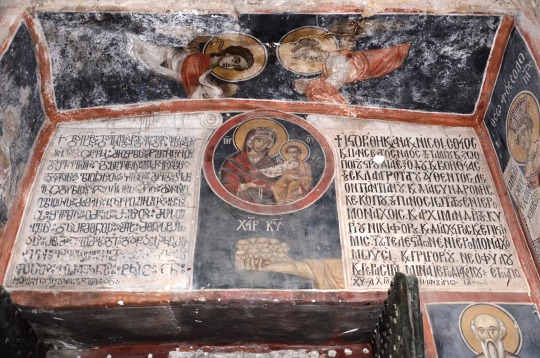
the church in the monastery of the cross in jerusalem, palestine.
the monastery was originally consecrated in the fourth century under the instruction of roman emperor constantine the great, while palestine was under roman rule. some years later, it was given to kartlian (basically roman georgia) king mirian III after the conversion of his kingdom to christianity. it remained a georgian orthodox monastery until 1685, when the then heavily-indebted georgians sold it to the greek orthodox patriarchate of jerusalem.
its murals retain both georgian and greek inscriptions. in the last picture, georgian text is on the left, and greek on the right.
#palestine#georgia#interior#worship#christian#diasporic palestine#my posts#caucasians 🤝 balkanites being to the middle east since time immemorial
494 notes
·
View notes
Text
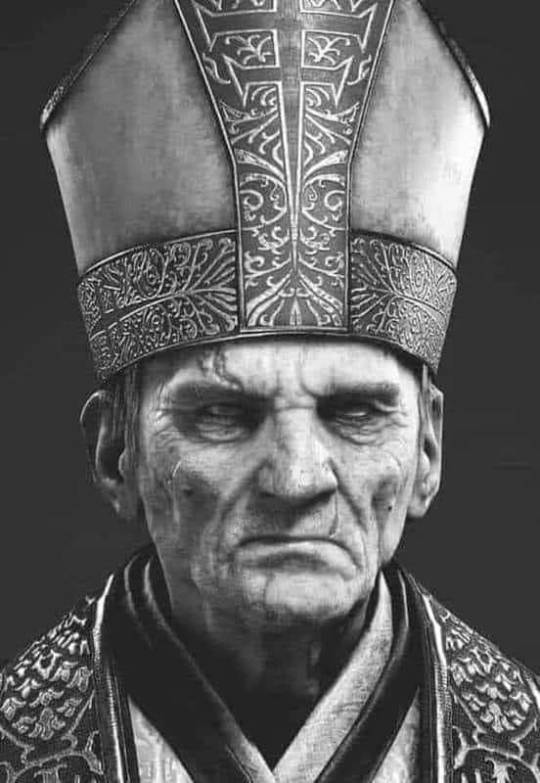
In 325, at the Council of Nicea, Constantine the Great created the Catholic Church after a genocide of 45,000 Christians, where he tortured them to renounce Reincarnation. At the same time the religious books of all the villages of the empire are collected and thus create THE BIBLE.
In 327, Constantine, known as the emperor of Rome, ordered Jerome to translate the Vulgate version in Latin, changing the Hebrew proper names and adulterating the scriptures.
In 431, the cult of the VIRGIN was invented.
In 594, PURGATORY was invented.
In 610, the title of the POPE was invented.
In 788, worship of pagan deities was imposed.
In 995, the meaning of kadosh (set aside) was changed to saint.
In 1079, the celibacy of priests is imposed >> a totally Catholic word.
In 1090, the Rosary was imposed.
In 1184, the Inquisition was perpetrated.
In 1190, indulgences are sold.
In 1215, confession was imposed on the priests.
In 1216, Pope Innocent III's tale of the terror of bread (a god in Greek mythology), which turns into human flesh, was invented.
In 1311, the batesimo prevailed.
In 1439, the non-existent PURGATORY was dogmatized.
In 1854, the immaculate Conception was invented.
In 1870, the absurdity of an infallible pope was imposed, in which the concept of Contracting was invented
There are more than 2,500 things invented by this religion to enslave human beings to Christianity ...
Religions and their Gods were created as a means of MANIPULATION and BUSINESS. As part of the EVOLUTION of the human being is the FREEDOM of these means of manipulation. Although little by little the human being is in the era of AWAKENING, young people are LESS RELIGIOUS every day for two more generations and the Catholic religion will be in its decline. (I wish to see that moment)
Everything will be part of our EVOLUTION.
It is up to you to continue believing what you now believe to be the absolute truth, because you have not questioned things, yourself ... question them yourself and you will see that all religions are an invention ... of man
#atheism#christianity#judaism#islam#catholicism#mormonism#baptist#jehovah witness#scientology#religion
314 notes
·
View notes
Text
Optimus princeps

Marcus Ulpius Trajan was born on 18 September 53 in Hispania Baetica ( Andalusia, Spain) in the ancient city Italica. He stood out for his military and political brilliance, his uprightness and fight against corruption, his austere character, and his philanthropy.
He was the only Roman emperor to whom he granted the title Optimus (The Best). With him the so-called Golden Age of the Roman Empire began. With him also began the so-called era of provincial emperors.
Trajan created Institutio Alimentaria, a program that helped orphaned and poor children throughout the Roman Empire. It provided food and subsidized education.
He conquered Dacia (Roman Dacia would evolve over time to give rise to present-day Romania) and defeated the Parthian Empire by conquering vast territories. During his reign the Roman Empire reached its maximum extension, setting its eastern border on the Tigris River and not on the Euphrates as it was before Trajan.
Trajan is mentioned in The Romanian National Anthem. In Romania the name TRAIAN is very common.
He was the only Roman emperor, before Constantine, who was held in high esteem in medieval and Renaissance Christian Europe, even though under his reign Christianity was prohibited (but without bloody persecutions).
Trajan was the last conqueror of Rome; his nephew and successor Hadrian marked the definitive borders of the empire.
"Be more fortunate than Augustus and better than Trajan" It became the greeting to emperors

Trajan spent his childhood during the reign of Nero. At the age of 15 he experienced the first civil war of the imperial era and the year of the 4 emperors. He made a career in the army under the principate of Vespasian and his sons Titus and Domitian; Was close and loyal to the Flavian Dynasty.
Following the assassination of Domitian in September 96, Nerva was proclaimed emperor.
In 97 a revolt by members of the Praetorian Guard forced the elderly and childless Nerva to adopt as his heir and successor the popular Trajan, then governor of Germania Superior.
Nerva died on 28 January 98 and Trajan succeeded him. One of his first acts was the construction of a limes to secure the Decuman Fields, Germanic lands on the right side of the Rhine, which had been won under Domitian.
Trajan arrived in Rome two years after being proclaimed emperor, having secured the Rhenish frontier. He was received with great joy.

Trajan's Forum in Rome was built by the architect Apollodorus of Damascus, chosen by Trajan himself. It included a basilica, two libraries, and after Trajan's death, a temple was built in his honour. Trajan's Column is the only structure that has survived.


The column was inaugurated on May 12, 113 and consists of a long spiral frieze describing the Dacian Wars (101-106)

The Alcántara Bridge, Extremadura, Spain, widely regarded as a masterpiece of Roman engineering, was built during the reign of Trajan. Photo: Dantla from de.wikipedia - Own work, GFDL


His wife Pompeia Plotina. Ph: Carole Raddato. And his niece Salonia Matidia. Ph: Louvre Museum , CC BY-SA 3.0, via Wikimedia Commons
Trajan was married to Pompeia Plotina, who according to Pliny the Younger "Added to Trajan's virtues of modesty and nobility of spirit her own, for she was kind, intellectual and benevolent."
They had no offspring but Trajan had a single niece, Salonia Matidia, whom he and his wife loved as a daughter and in fact she lived with them since she was 10 years old when her father died.
This lady is the key to understanding how Trajan's successors, supposedly adopted by choice only for their qualities, are linked by blood or marriage ties related to Salonia Matidia. In the so-called "Antonine Dynasty" (name given by 18th century European historians) or dynasty of the "adoptive Emperors" all except Nerva were related to each other and to Trajan through women, either through collateral kinship, marriage or both.
Ulpius-Aelia is the correct name for the dynasty that begins with Trajan and ends with Commodus. And in the list of the "five good emperors" modern historians should eliminate Nerva, who did nothing good - and appointed Trajan as his successor under duress - and include instead Lucius Verus, co-emperor with Marcus Aurelius, who ruled for eight years and was a good ruler.

Trajan died of illness between 8 / 9 August 117 in Selinus (Cilicia). His wife placed the urn containing his ashes on Trajan's Column. He was deified by the Senate.

Trajan's Column, Rome. Photo: Nikon Z7II, CC BY-SA 4.0, via Wikimedia Commons
The Trajan's Column was an absolute novelty in ancient art and became the most avant-garde work of Roman historical relief.
70 notes
·
View notes
Text
Alexander the Great in Greek Art
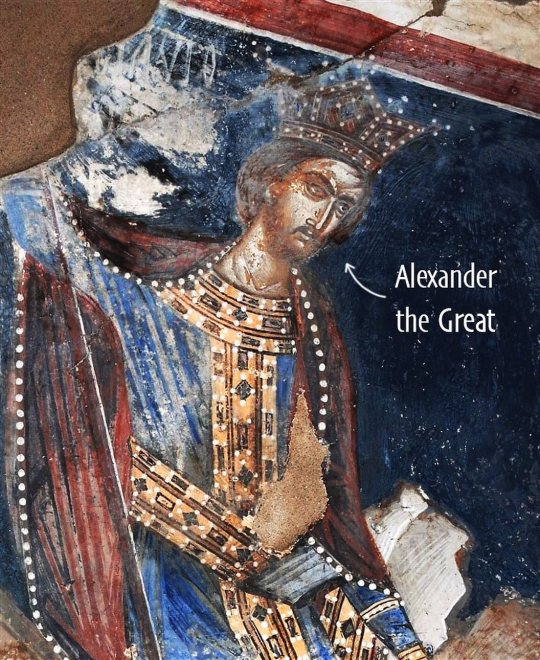
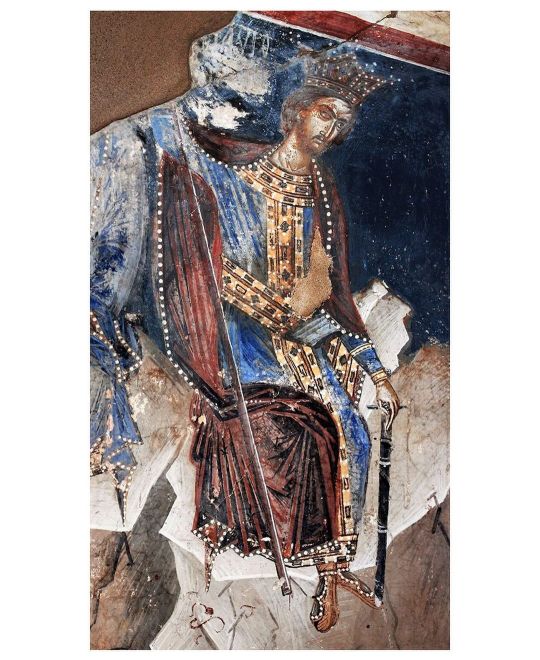
Alexander the Great (as per the official statement of the restorers). At. Demetrius Church, Palatitsia by unknown artist, 1570
Aigai was the original capital of the Macedonian Kingdom and the place where Philip II was killed. Although the capital was later transferred to Pella, Aigai remained the burial place for the Macedonian kings. The little church still maintains part of the ancient history alive as its interior bears incorporated architectural elements from the palace of Philip II. Alexander is depicted as a representative of the “Kingdom of the Greeks” -one of the four kingdoms that predate the end of times according to the prophet Daniel’s interpretation of Nebuchadnezzar II’s eschatological dream. Alexander the Great in Byzantine art:


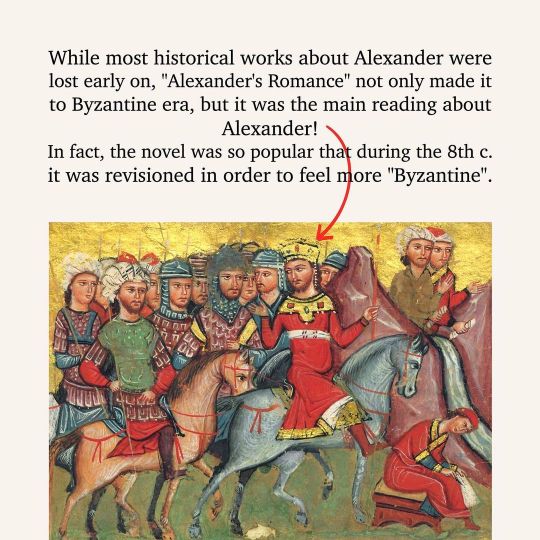


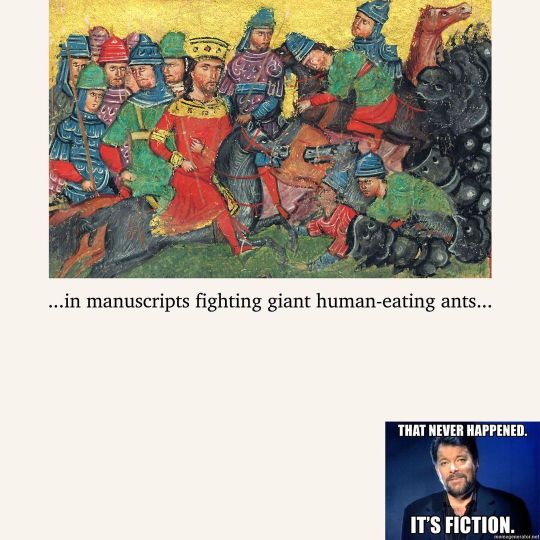
Note, 7th painting because it shows a very important concept in Byzantine understanding of their past: Next to Alexander the "βασιλεύς των Ελλήνων" (emperor/king of the Hellenes/Greeks), you can see Octavian "βασιλεύς των Ρωμαίων" (emperor of the Romans/Byzantines). Alexander and Octavian Augustus were the most important historical rulers of the future Christian Romans (our so-called "Byzantines) before the reign of Constantine the Great.
source1
source2
#Alexander the Great#He's always been “our king” so to speak#greek history#history#hagiography#orthodoxy#Christianity#greek orthodox
81 notes
·
View notes
Text

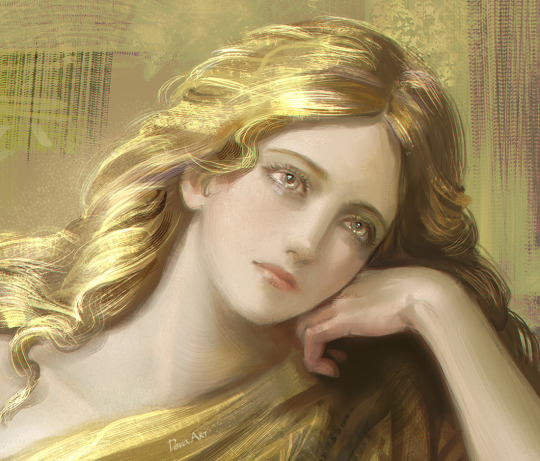
Basil Lekapenos - a powerful eunuch and ruler of Byzantine empire. He was an illegitimate son of the Byzantine emperor Romanos I Lekapenos who served as the parakoimomenos and chief minister of the Byzantine Empire for most of the period 947–985, under emperors Constantine VII, Nikephoros II Phokas, John I Tzimiskes, and Basil II. His mother was a slave woman of "Scythian" (possibly implying Slavic/Bulgarians) origin. From his father's side, he had Macedonian and Armenian roots. Basil was a close friend of emperor John Tzimiskes. Basil himself took part in the great campaign against the Rus' in Bulgaria in 971, having been entrusted with the reserve forces, the baggage train and the supply arrangements, while Tzimiskes himself with his elite troops marched ahead. His enormous wealth enabled Basil to become, according to the Oxford Dictionary of Byzantium, "one of the most lavish Byzantine art patrons". "Psellos characterized him as the most remarkable person in the Roman empire, outstanding in intellect, bodily stature, and regal in appearance." As an artifice shaped by human hands, Basil Lekapenos became skilled in rhetoric, diplomacy, warfare; he possessed avid desire for wealth and power, subtle taste, and an eye for exquisite shapes. This eunuch's adorned body could be equated to the beautiful Limburg container. It is this brilliant form in which power resides. The eunuch is the angelic guard and protector; the face and body of the empire, in brief—the container of the empire. Relic and reliquary work in tandem, a pair suspended between presence and absence, between inaccessible energy—the emperor—and sensual experience of an iconized container—the eunuch."
— Res: Anthropology and Aesthetics, 51: Spring 2007. By Francesco Pellizzi
The history of Byzantium is dotted with examples of what some historians condemn as over-powerful eunuch courtiers, who attempted to dominate their rulers. From Chrysaphios in the fifth century, Euphratas under Justinian, to Staurakios and Aetios, Samonas in the ninth, Basil Lekapenos in the tenth, and John the orphanotrophos (in charge of the large Imperial Orphanage in Constantinople) in the eleventh, the list is extensive. Basil Lekapenos, an illegitimate son of Romanos I, known as ‘Nothos’ (‘the Bastard’), made a particularly successful career. After being castrated as a child to destroy any imperial ambitions he might have developed, he was appointed parakoimomenos by Constantine VII. He held on to great power through the rule of Nikephoros II and John I, and practically governed the empire during the first decade of Basil II’s reign (976–85). With his great wealth, he commissioned magnificent art objects such as the Limburg reliquary. He also wrote a treatise on naval battles and had it copied in a splendid manuscript of military Taktika.
In this respect, Basil Lekapenos was typical of several high-ranking eunuchs who became art patrons, diplomats, generals, administrators, teachers, writers, theologians and churchmen (plate 10). In many cases these officials were detached from their court duties to undertake particular missions, diplomatic or military, such as Andreas, who negotiated with the Arabs in the seventh century, or Theoktistos, who commanded the navy in the ninth century. In Byzantium, as in the caliphate, eunuchs regularly found employment as military generals and diplomats. Their high status is confirmed in the Book on the Interpretation of Dreams, written by a Christian Greek author, Achmet, who drew on Byzantine and Arabic sources as well as on his own dreams. In common with many authors, he equates beautiful eunuchs with angels. Both of course were considered sexless beings, since angels have no sex and eunuchs were supposed to have lost theirs.
As well as these high-ranking eunuch officials, others made careers far away from the Great Palace and imperial patronage. They appear incidentally in hagiographical sources, and sometimes feature on a list of wedding gifts, as in the story of Digenes Akrites, the frontier hero. When Digenes Akrites finally married the girl (she is never named), her eldest uncle presented them with ten boys:
Sexless and handsome with lovely long hair, Clothed in a Persian dress of silken cloth With fine and golden sleeves about their necks. — Byzantium: The Surprising Life of a Medieval Empire by Judith Herrin.
About eunuchs' appearance in Byzantium. As he [Andrew] sat on the ground in front of the gateway there came a young eunuch who was the chamberlain of one of the nobles. His face was like a rose, the skin of his body white as snow, he was well shaped, fair-haired, possessing an unusual softness, and smelling of musk from afar. [Another variant: beautiful young eunuch, with blond hair (epixanthos), a face like a rose and a body white like snow] -- Life of St Andrew the Fool.
Basil had a luxurious palace with 3000 servants, and he also built the most beautiful church of St. Basil, full of gold and decorations. It is said that when his nephew Basil Porphyrogenitus destroyed this church, Basil the eunuch fell from a stroke and was paralyzed, and later he died in the monastery.
Psellos records that In 985, the emperor Basil Porphyrogenitus assumed personal rule and banished Basil Lekapenos who soon after died "his limbs…paralysed and he a living corpse".
***
"In the course of Byzantium’s long history, a few individuals effectively ruled the empire without occupying the imperial throne. One of the most interesting of these figures was Basil the Nothos, or Basil the Parakoimomenos, who was the main power beside or behind the throne for most of the period from 945 to 985.
This he did until 985, when Basil II, no longer a teenager, could no longer bear his own exclusion from power. The vindictiveness with which he not only removed the Parakoimomenos from office, but also sought to destroy the latter’s political legacy, is a measure of how complete the elder Basil’s political control had been. It was a political control that both amassed and expended great wealth, both facilitating and relying on an extensive network of social and cultural patronage. The greatest beneficiary of this patronage, the monastery that Basil founded in the name of his patron saint, has disappeared almost without trace, but his sponsorship has been seen, or surmised, in numerous cultural artefacts of the later tenth century, and interest in his role as the last patron of the “Macedonian Renaissance” shows no signs of abating.
At the centre of the Parakoimomenos’ quasi-imperial power and patronage was his oikos, which was no doubt appropriate to his status. Indeed, his house and household are mentioned no less than four times in literature of the period. According to Leo the Deacon, Basil was able to mobilise and arm over three thousand “household members” (οἰκογενεῖς) in support of Nikephoros Phokas in 963. The same author later records that he had witnessed a bright star descending on the house of the proedros Basil; this portended Basil’s death shortly afterwards and the looting of his property
There is an additional reason for seeking the house of Basil the Parakoimomenos in the area of the Embolos of Domninos. This is because it was somewhere to the west of the Embolos that Basil established his monastery of St Basil, which was famously stripped of its wealth and its ornaments by Basil II."
-The House of Basil the Parakoimomenos, by Paul Magdalino
35 notes
·
View notes
Text

A mural depicting Constantine XI Dragases Palaeologos (1404 - 1453), the last Emperor of the Eastern Roman (Byzantine) Empire, was recently discovered during restoration works in the Monastery of the Great Archangels (Μονή Παμμεγίστων Ταξιαρχών) in Aegiália, South Greece by archaeologist Anastasia Koumousi.

The two-headed eagle decorates the emperor’s garments. This is the symbol of the Palaeologi Dynasty and also the emblem of the Greek Orthodox Church.
The discovery is considered very significant because the monastery dates to the early 15th century and this mural is the only surviving one depicting the emperor to have been created during his lifetime.

The 15th century monastery in Aegialia.
#greece#history#eastern Roman Empire#Byzantine empire#Greek history#Byzantine history#news#Greek news#Constantine xi palaiologos#monastery of the great archangels#Greek orthodoxy#Eastern Orthodoxy#aegialia#Achaea#Peloponnese#peloponnisos#mainland
38 notes
·
View notes